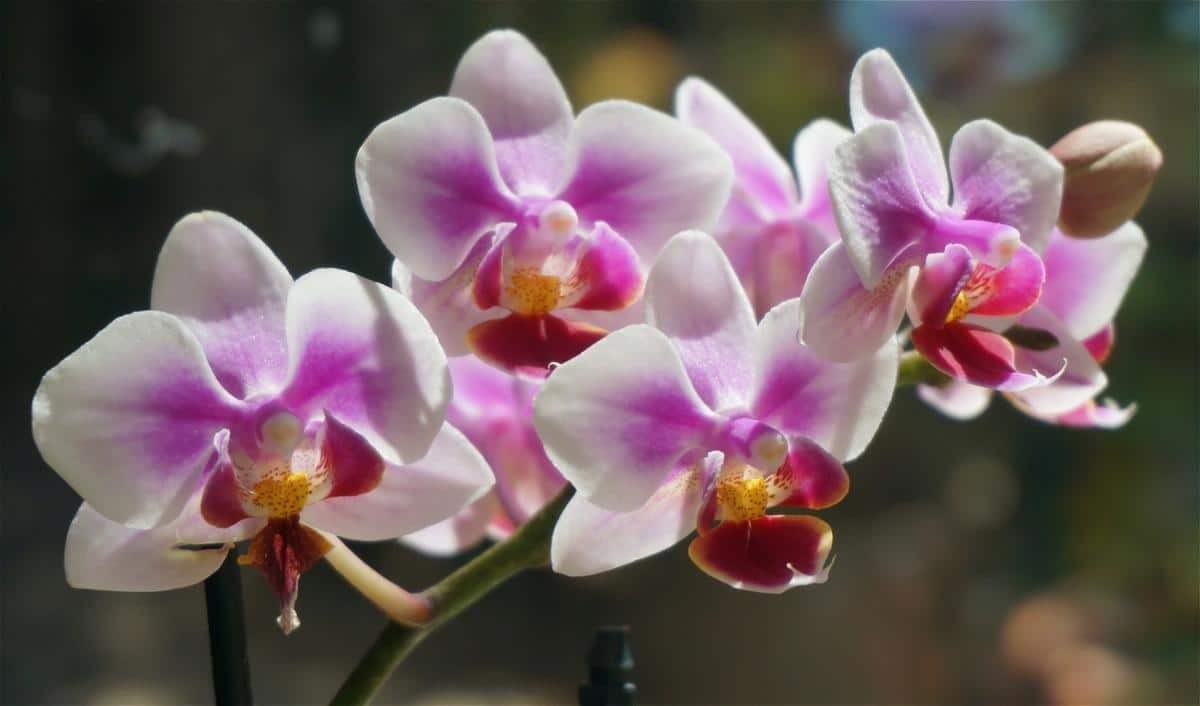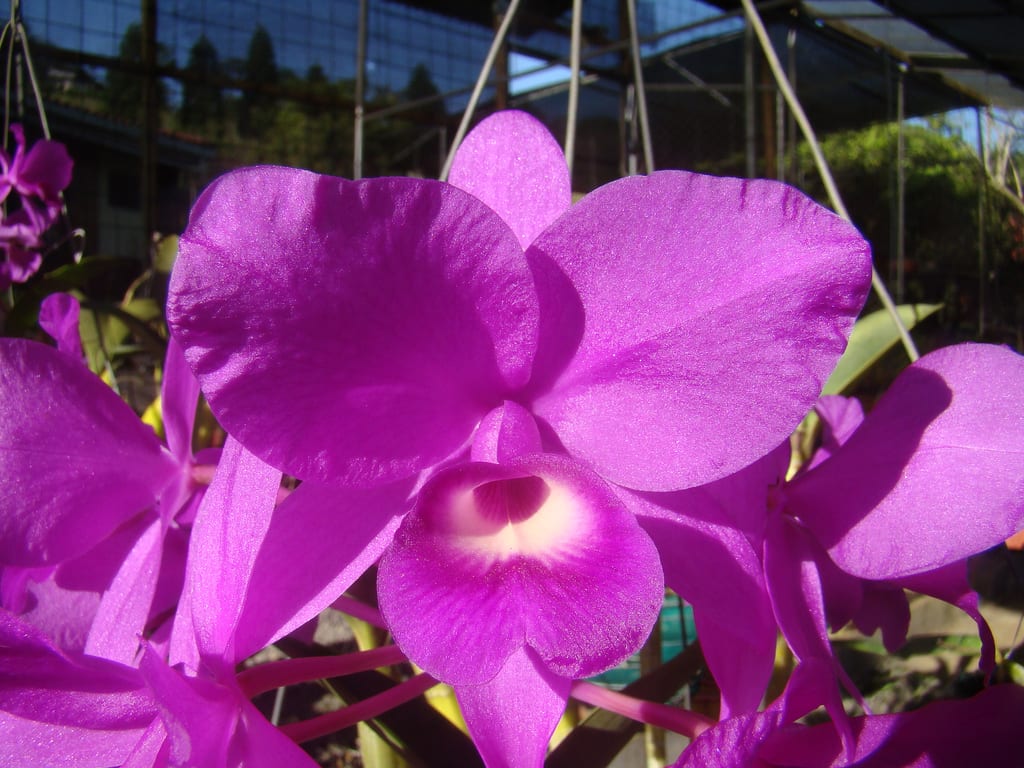
Image - Flickr / Eduardo A. Pacheco
We will not deny it: all orchids have something special. But when you get used to always seeing the same ones, the day you discover another it is difficult to avoid looking away. This is precisely what can happen to many of us with purple guaria.
This beautiful plant grows on the branches of trees so it is adapted to live in bright areas but protected from the rays of the sun. Do you want to meet her? Let's go there.
Origin and characteristics of the purple guaria
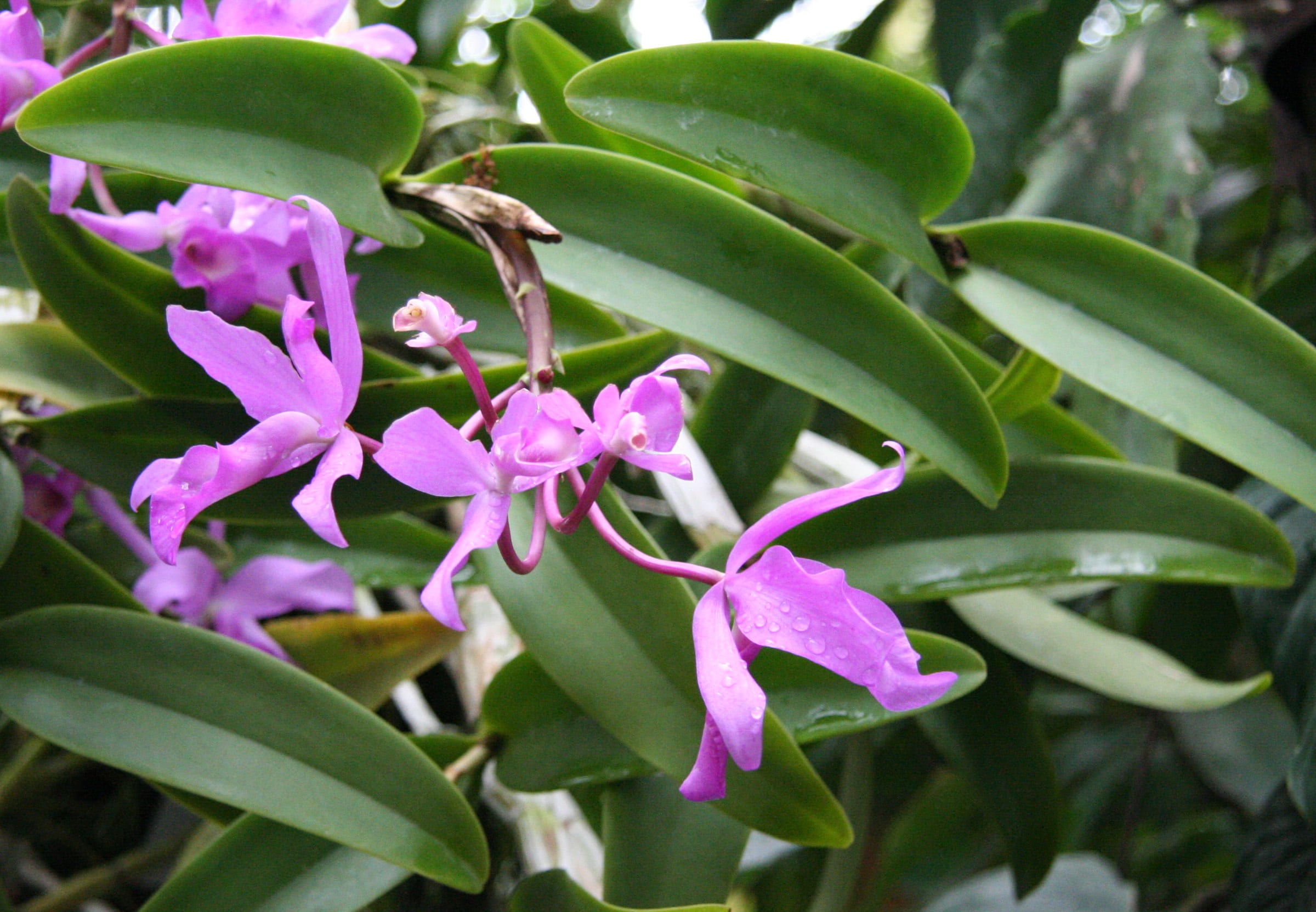
Image - Wikimedia / Michael Wolf
Our protagonist is a epiphytic orchid native to the Pacific zone of Central America, where it lives in mountainous areas at altitudes ranging from 700 to 1400 meters above sea level. Its scientific name is Guarianthe skinneri, although it is also accepted that of Cattleya skinneri, and is popularly known as candelaria, guaria or purple guaria.
The lanceolate, dark green leaves sprout from a 25 to 30cm pseudobulb. The flowers appear grouped in auxiliary purple inflorescences, which is what gives it the popular name, but they can also be white, lilac or bluish depending on the variety.
What are the cares?
If you want to get a copy, we recommend providing the following care:
Climate
The suitable climate for the purple guaria is warm tropical. It is a plant found in mountainous forests, so the humidity must be high.
If we talk about temperatures, they should not exceed 30 degrees Celsius, but neither should they drop below 18ºC.
Location
- Body exterior:: in semi-shadow. It must have more light than shade, but it must always be protected from direct sun.
- Interior: in a room with plenty of natural light, and away from drafts. If the environment is dry, place containers of water or a humidifier around it. I do not advise spraying / spraying the leaves, especially during the winter as they will rot.
Earth
- Flower pot: the ideal is to have it in an orchid substrate composed of pine bark. You can get it here.
- Garden: being epiphytic, you can have it in a tree as long as the weather is warm. Here We explain how to do it.
Irrigation
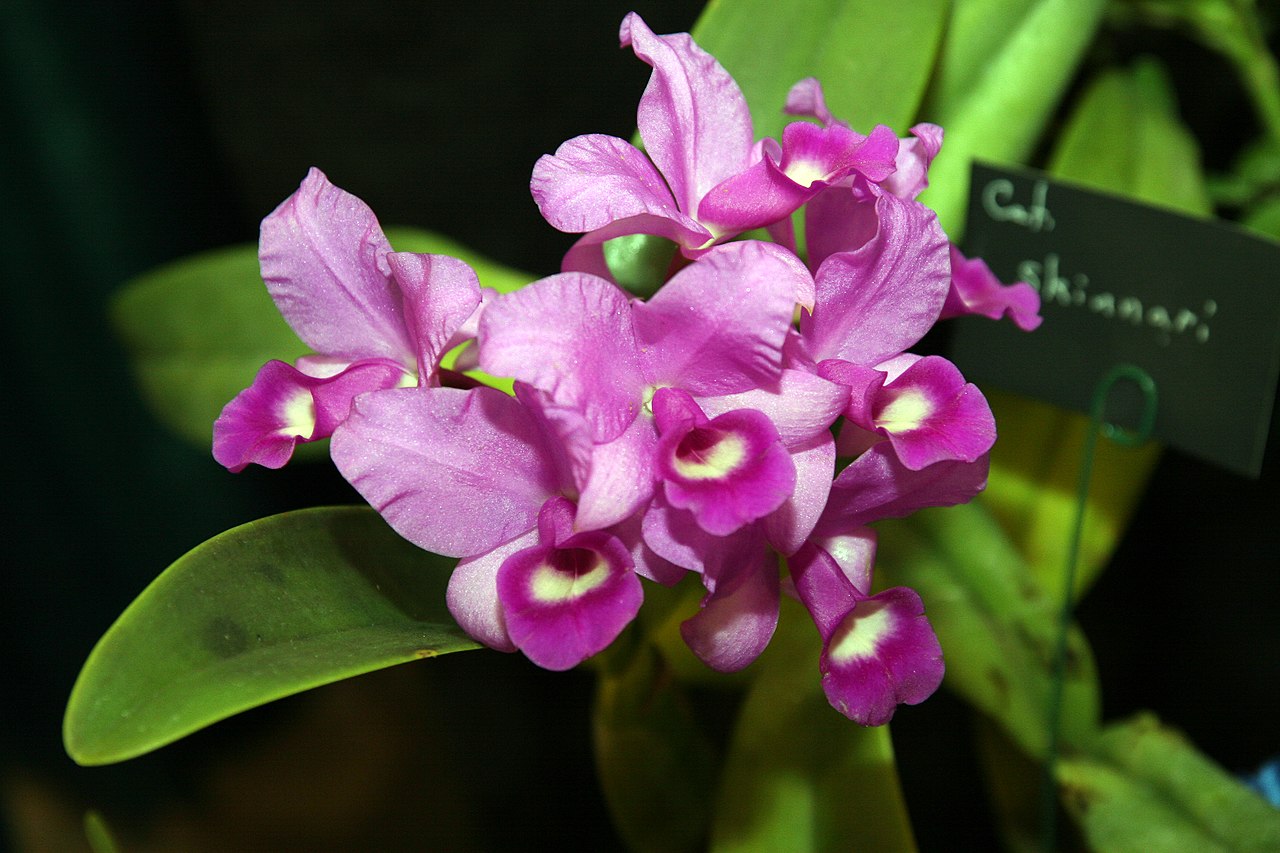
Image - Wikimedia / David J. Stang
The purple guaria does not withstand drought, but you also have to be careful with excessive watering, otherwise its root system would rot, and therefore we would be left without a plant. For this reason, It is advisable to water 3-4 times a week in summer and a little less the rest of the year.
If you have doubts, keep in mind that it will always be easier to recover a dry plant than another that has been watered too much, so sometimes it is better to wait a few days before re-moistening the substrate, or check the humidity of the same .
It is important to use rainwater or lime-free, and avoid putting a plate under it as well as placing the pot in a pot without holes. The reason is that when watering, the water that has not been absorbed by the plant and the substrate will end up inside the plate or the pot, and if we do not remove it within 20 minutes of having watered, the orchid would end up having problems due to excess. of water.
Planting or transplanting time
Whether you want to change the pot or move it to the garden, you must do it in spring.
As it is a relatively small plant, you can transplant it every two years, using a clear plastic pot, like this one on here. But there will come a time when it will not be necessary to transplant it again, which will be when it reaches its final size.
Pests
It is quite resistant, but if the environment is dry and warm can be affected by the most common pestsas Red spider, mealybug, aphid or White fly. Being a plant with a manageable size, if you see any insects, or several, you can remove them with a brush soaked in pharmacy alcohol, as if you were cleaning it.
Management
If it is watered in excess it will be harmed by the mushrooms, which will cause root and / or stem rot, as well as black spots on the leaves. In the event that there are already any symptoms, treat the plant with a copper-based fungicide, and reduce the risks.
Rusticity
Due to its origin can't stand cold or frost. The minimum temperature that it holds is 18ºC. For this reason, if the winters are cold in your area you will have to protect it inside the house, away from drafts.
Another option, although not so inexpensive, is to make or build a small heated greenhouse. This greenhouse can be kept indoors, or if you equip it with a thermoregulator, outdoors.
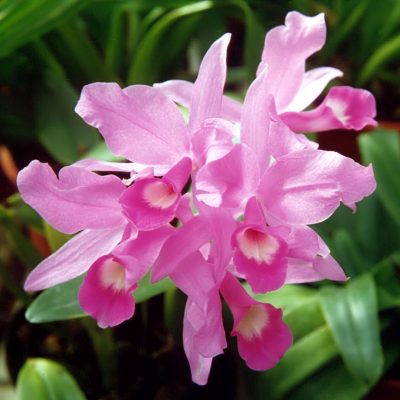
Image - Wikimedia / Arne and Bent Larsen, Haarby, Denmark
What did you think of the purple guaria? It is certainly not a very common plant outside its places of origin, but its beauty is such that it is worth getting a specimen and enjoying it, even in a house or flat.
